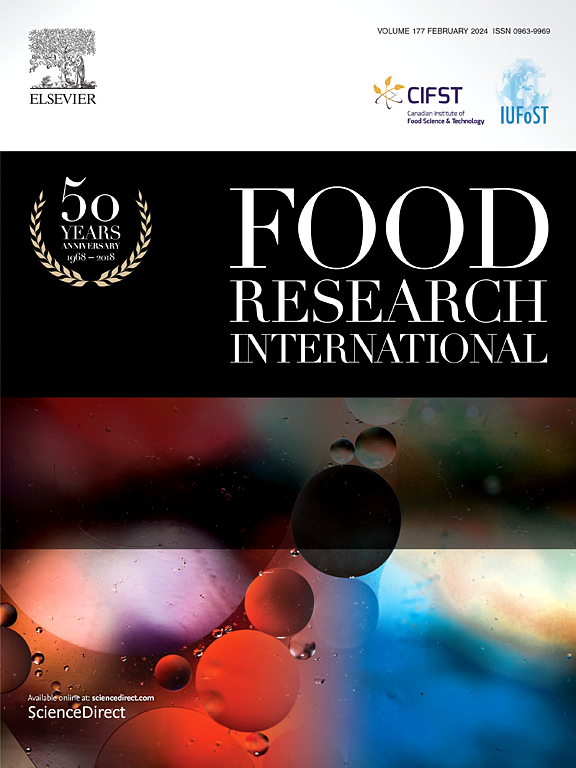淀粉水解物及其杂质和膜基技术在工业规模上作为一种有前途的可持续净化方法的作用
IF 7
1区 农林科学
Q1 FOOD SCIENCE & TECHNOLOGY
引用次数: 0
摘要
淀粉水解物是通过淀粉水解得到的糖浆,具有一定的碳水化合物组成和浓度。每年的收获条件和原料的供应,如玉米、小麦、大米、土豆和某些植物的根,都会影响它们的质量。高质量的淀粉水解产物有许多应用,包括食品、纺织品、造纸、化妆品、生物塑料、制药和建筑中的成分。然而,在淀粉加工过程中,溶液中遇到的颜色分子、特征风味、盐和蛋白质等杂质会影响产品质量。随着对有机和可持续生产的日益重视,淀粉水解物必须符合更高的健康和环境标准。本文综述了淀粉水解物的生产和纯化的综合概况。它探讨了导致杂质形成的化学过程及其对最终产品组成和特定特性的影响。下游处理方法的回收,净化和浓缩也进行了研究,比较传统技术与新兴的膜为基础的技术。膜技术为高效、可持续地净化植物淀粉水解物提供了一种潜在的解决方案,同时提高了净化效率,减少了能源消耗和废物产生。它们在较低的温度下工作,避免相变,额外加热,化学品和溶剂交换。尽管膜技术广泛应用于各种食品工业,但其在淀粉水解加工中的应用研究很少,实验验证有限。为了解决这一问题,本文综述了现有的应用,并讨论了阻碍工业应用的挑战,包括膜污染、合适膜的选择、使用寿命和更换成本,同时也确定了需要进一步实验研究和开发的领域。本文章由计算机程序翻译,如有差异,请以英文原文为准。

Starch hydrolysates, their impurities and the role of membrane-based technologies as a promising sustainable purification method at industrial scale
Starch hydrolysates are syrups obtained through the hydrolysis of starch with a defined carbohydrate composition and concentration. Annual harvest conditions and the availability of raw materials, such as corn, wheat, rice, potato, and certain plant roots, influence their quality. High-quality starch hydrolysate products serve numerous applications, including ingredients in food, textiles, paper, cosmetics, bioplastics, pharmaceuticals and construction. However, impurities such as colour molecules, characteristic flavours, salts, and proteins encountered in the solution along the starch processing steps can compromise product quality. With increasing emphasis on organic and sustainable production, starch hydrolysates must meet higher health and environmental standards. This review provides a comprehensive overview of starch hydrolysates production and purification. It explores the chemical processes leading to the formation of impurities and their impact on the final product composition and specific characteristics. Downstream processing methods for recovery, purification, and concentration are also investigated, comparing traditional techniques with emerging membrane-based technologies. Membrane technologies offer a potential solution for purifying plant-based starch hydrolysates efficiently and sustainably by enhancing purification while reducing energy consumption and waste generation. They operate at lower temperatures, avoiding phase transitions, extra heating, chemicals, and solvent exchanges. Although membrane technologies are widely used in various food industries, minimal research exist on their applications in starch hydrolysate processing, with limited experimental validation available. Addressing this gap, this review compiles established applications and discusses challenges hindering industrial adoption—including membrane fouling, the selection of appropriate membranes, the operational lifespan, and replacement costs,— while also identifying areas requiring further experimental research and development.
求助全文
通过发布文献求助,成功后即可免费获取论文全文。
去求助
来源期刊

Food Research International
工程技术-食品科技
CiteScore
12.50
自引率
7.40%
发文量
1183
审稿时长
79 days
期刊介绍:
Food Research International serves as a rapid dissemination platform for significant and impactful research in food science, technology, engineering, and nutrition. The journal focuses on publishing novel, high-quality, and high-impact review papers, original research papers, and letters to the editors across various disciplines in the science and technology of food. Additionally, it follows a policy of publishing special issues on topical and emergent subjects in food research or related areas. Selected, peer-reviewed papers from scientific meetings, workshops, and conferences on the science, technology, and engineering of foods are also featured in special issues.
 求助内容:
求助内容: 应助结果提醒方式:
应助结果提醒方式:


